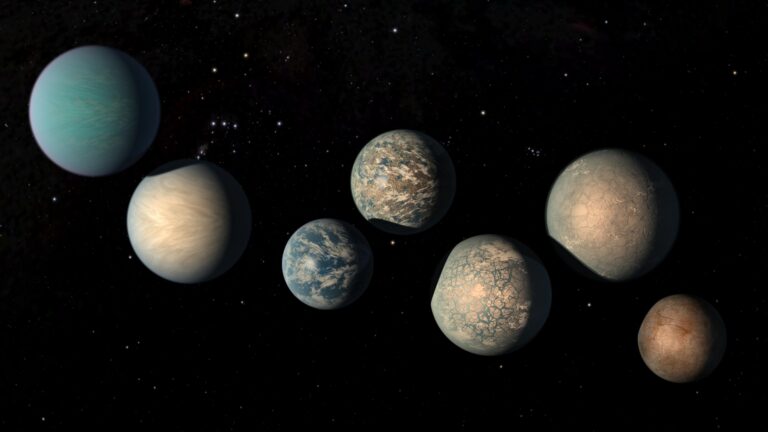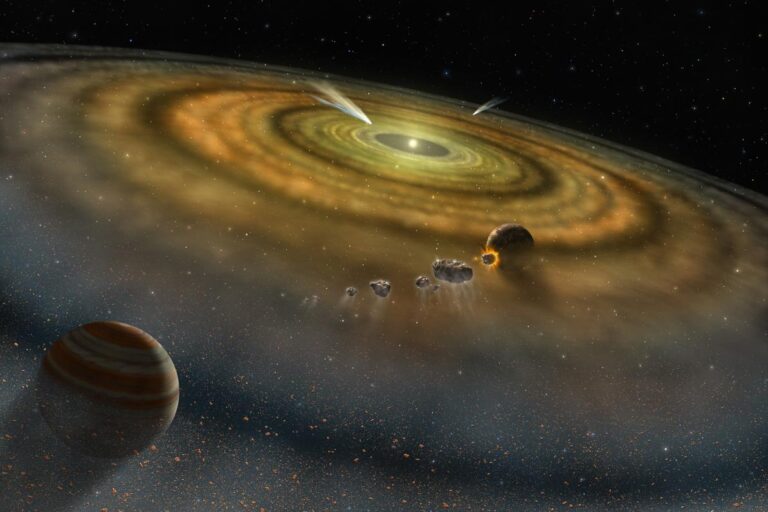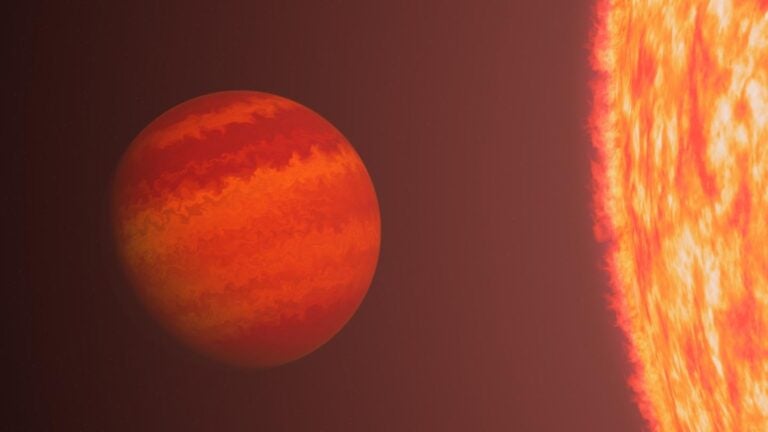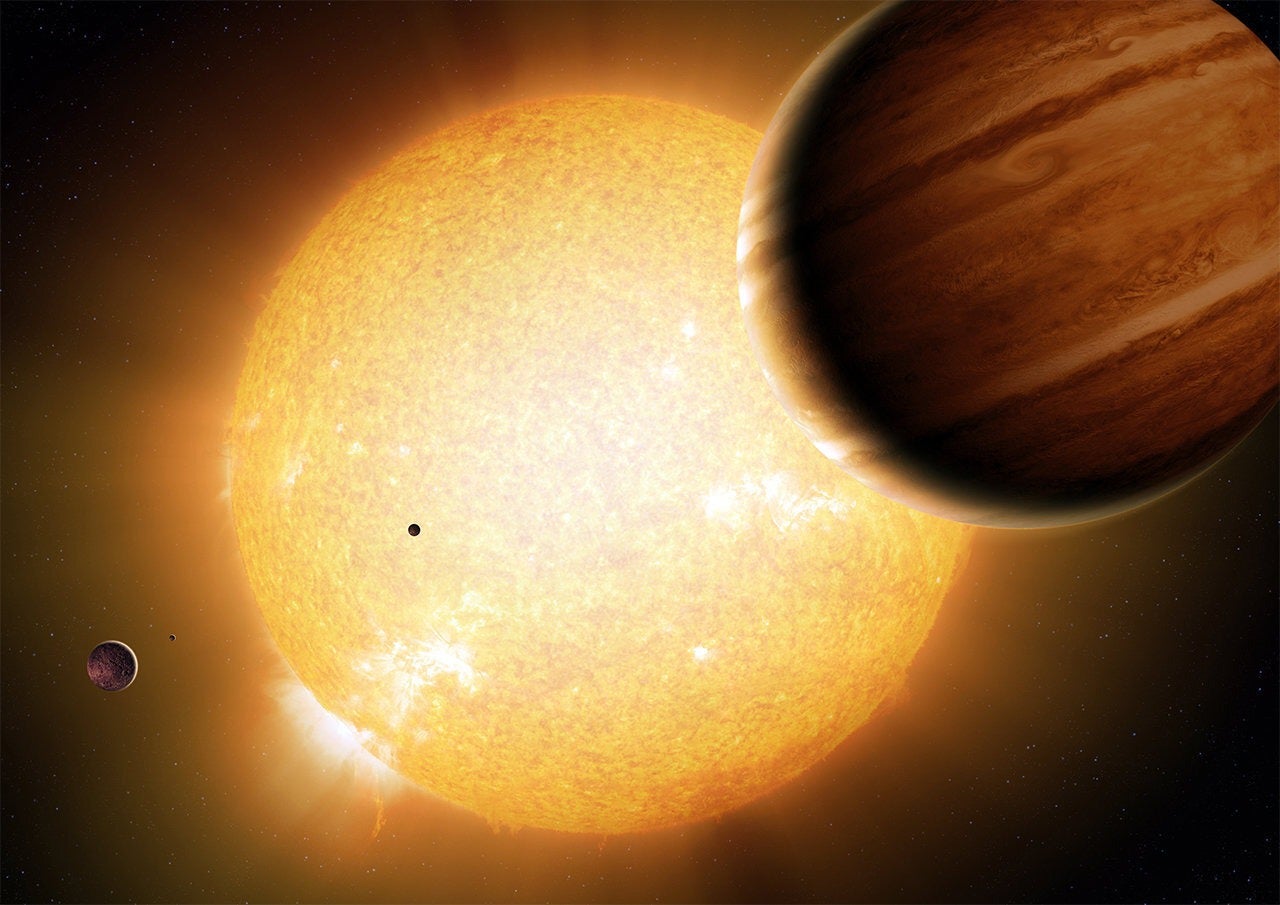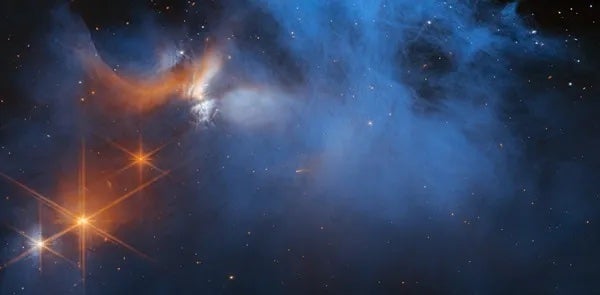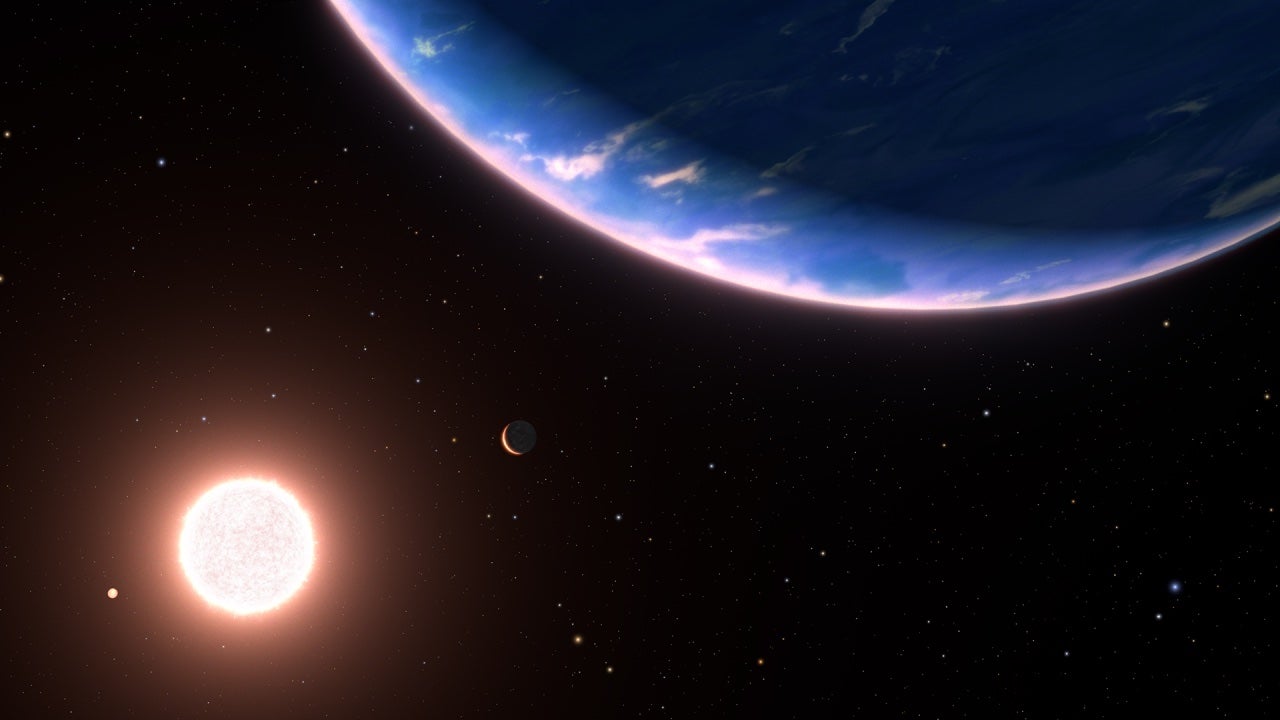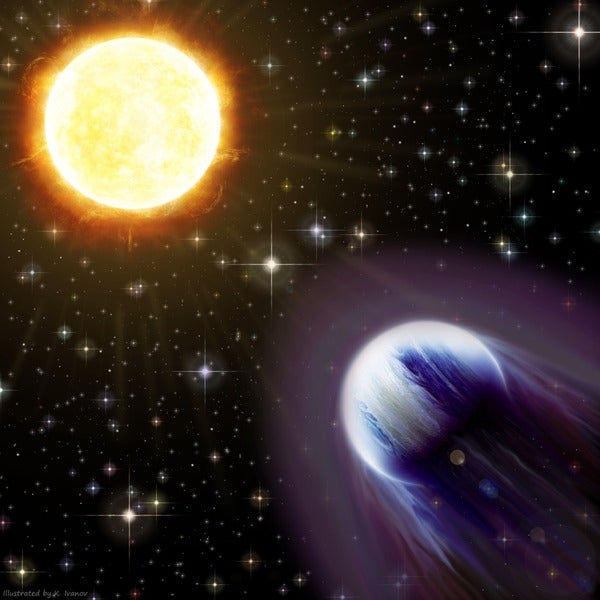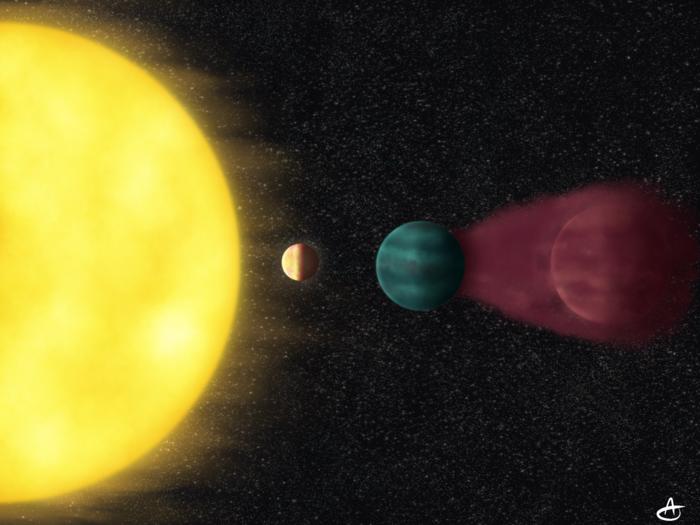
Astronomers have discovered the youngest known Earth-sized planet circling a nearby Sun-like star. At just 400 million years old, the newfound world, named HD 63433 d, is more than 10 times younger than our 4.5-billion-year-old Earth, offering astronomers a rare front-row seat to study how terrestrial worlds like our own evolve early on in their lifetime.
“Although many Earth-sized planets are known, most are billions of years old,” says Ian Crossfield, an assistant professor of physics and astronomy at Kansas University in Lawrence, Kansas, who was not involved with the discovery. HD 63433 d is “nearly teenaged rather than middle-aged, so it could provide important insights into how similar, older planets evolved into the hot, airless rocks we see today.”
“A planet’s youth, much like a human’s, is transformative and impacts the rest of the planet’s life,” says Keighley Rockcliffe, a graduate student studying exoplanet atmospheres at Dartmouth College in New Hampshire, who was not involved in the new study. In particular, during this time, young planets are blased by strong stellar winds from their active host stars. And HD 63433 d is extremely close to its host star, completing one orbit every 4.2 days.
Spotting worlds as young as HD 63433 d is tricky “simply because we live in an old galaxy in an old universe,” says Rockcliffe. Our Sun resides in a region of the Milky Way whose age is roughly 4.5 billion years, meaning many of our cosmic neighbors are about that old.HD 63433 d’s “inherently unusual” youth and Earth-like size, combined with its Sun-like host star, make the planet “one of the first of its kind to be discovered,” she says.
A fast-moving planetary system
The new exoplanet is the third to be found around the star HD 63433, which is roughly 73 light-years from Earth and a member of the Ursa Major moving group of stars. The other two planets, both mini-Neptunes that circle their star every two to three weeks, were spotted by a different team of astronomers in 2020.
The host star itself lies in the constellation Gemini and shines at magnitude 6.9 — not bright enough to see with the naked eye limit but easy to pick up with binoculars, says study co-author Melinda Soares-Furtado of the University of Wisconsin-Madison.
While analyzing data sent home by NASA’s Transiting Exoplanet Survey Satellite (TESS), Soares-Furtado and her colleagues spotted telltale dips in brightness of HD 63433, caused by planets as they cross the front of their parent star. After removing the known signal from the two previously discovered planets, the team noticed an additional periodic signal consistent with an Earth-sized planet. They describe the new planet in a paper published last month in The Astronomical Journal.
Currently, there are no signs of additional planets in the HD 63433 system, although “we’re not sensitive to the more distant orbiting objects that may be transiting that host star,” says Soares-Furtado.
An year on HD 63433 d is a quick 4.2 days, while a day is effectively infinite, as it always shows the same face to its star, just like our Moon does to Earth. One side, eternally bathed in starlight, could sizzle at up to 2,300 degrees Fahrenheit (1,260 degrees Celsius), while the other side is shrouded in permanent darkness.
“I highly doubt that this is habitable in any way, even in the best case scenarios,” says Soares-Furtado. How sharply the day on HD 63433 d transitions into night at the boundary, as well as the actual temperature on each side, “really depends upon the atmospheric characteristics, which we don’t know,” she adds.
To have or not to have an atmosphere
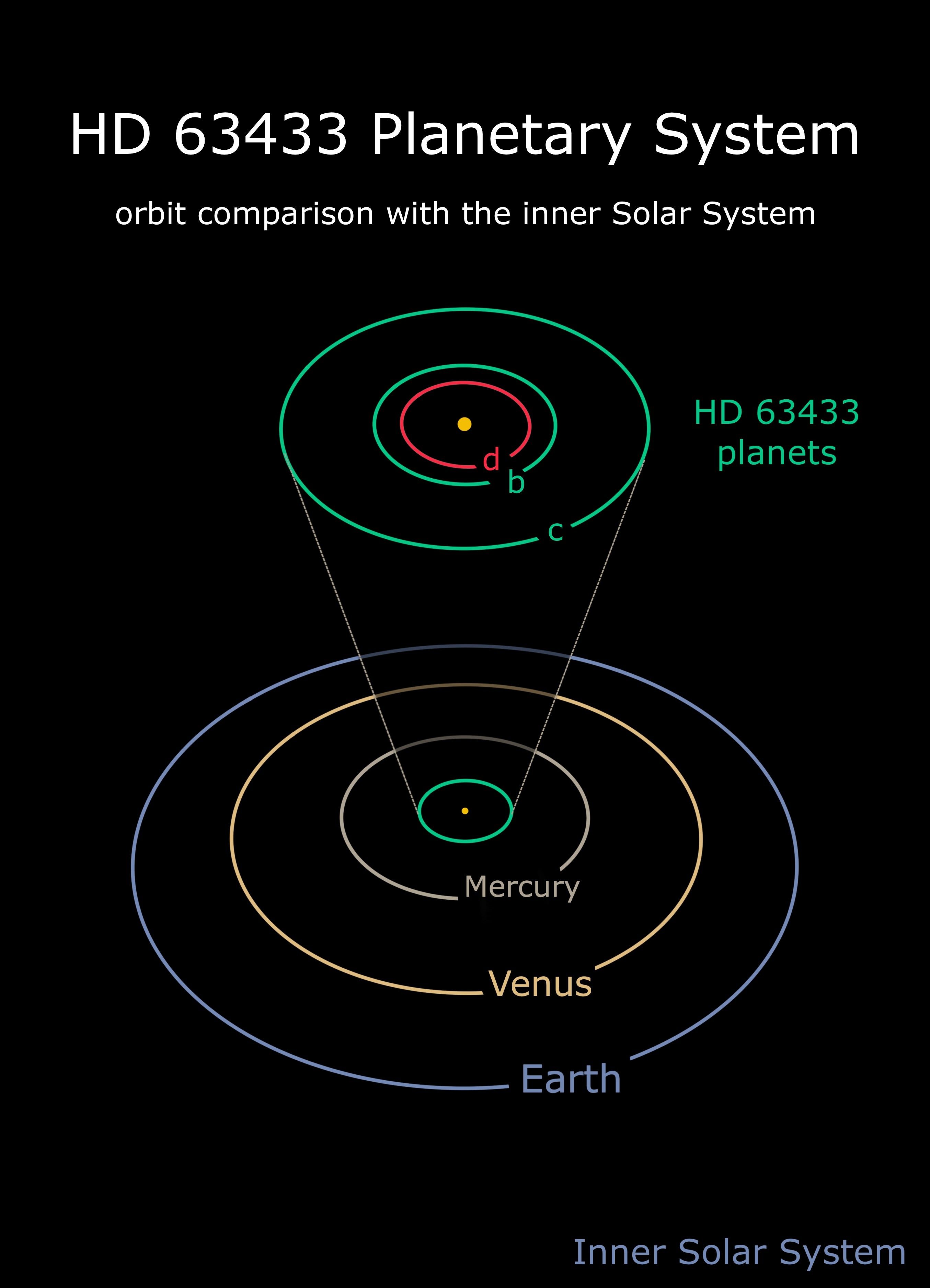
Despite the many unknowns, the fact that the newfound planet circles “a young, nearby, Sun-like star is particularly compelling because it could still possess a substantial atmosphere even if it may go on to lose it over the next few billion years,” says exoplanet astronomer Jacob Lustig-Yaeger of the Johns Hopkins Applied Physics Lab in Laurel, Maryland, who was not involved in the new study.
“A similar planet in an older system may have a different type of atmosphere or no atmosphere at all,” he adds. “Studying a collection of exoplanets like HD 63433 d is how we can learn more about planetary evolution without waiting millions or even billions of years for any one planet to evolve.”
Follow-up observations with NASA’s Hubble Space Telescope and James Webb Space Telescope could reveal whether HD 63433 d has an atmosphere. If it does, future studies could determine the pace at which the stellar winds are eroding it, an insight crucial to the planet’s evolution.
“We don’t know if small, terrestrial planets like HD 63433 d have atmospheres, so there isn’t any evidence saying the planet should be losing something it might not have,” says Rockcliffe. “It is still worth searching for, though, because we learn something new even if we don’t find anything — an important but often overlooked aspect of science!”



